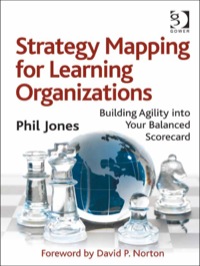Question
11. Bakers Ltd are currently undertaking a review of the delivery vans used to deliver products to customers. The company runs two types of delivery
11. Bakers Ltd are currently undertaking a review of the delivery vans used to deliver products to customers. The company runs two types of delivery van (type A recently purchased and type B at least 3 years old) which are supposed to be capable of achieving 20 km per litre of petrol. A new sample has now been collected as follows:
| A | B | A | B |
| 17.68 | 15.8 | 26.42 | 34.8 |
| 18.72 | 36.1 | 25.22 | 16.8 |
| 26.49 | 6.3 | 13.52 | 15 |
| 26.64 | 12.3 | 14.01 | 28.9 |
| 9.31 | 15.5 | 33.9 | |
| 22.38 | 40.1 | 27.1 | |
| 20.23 | 20.4 | 16.8 | |
| 28.8 | 3.7 | 23.6 | |
| 17.57 | 13.6 | 29.7 | |
| 9.13 | 35.1 | 28.2 | |
| 20.98 | 33.3 |
Assuming that the population distance travelled varies as a normal distribution, Bakers Ltd is wondering if there is any evidence to suggest that the two types of delivery vans differ in their mean distance travelled. Use a two sample t-test assuming unequal variances. What is the sample mean of the distance travelled for the type A delivery vans? Enter your answer rounded to two decimal places.
12. Continuing problem 11, what is the sample mean of the distance travelled for the type B delivery vans? Enter your answer rounded to two decimal places.
13. Continuing problem 11, what is the sample standard deviation of the distance travelled for the type A delivery vans? Enter your answer rounded to two decimal places.
14. Continuing problem 11, what is the sample standard deviation of the distance travelled for the type B delivery vans?
15. Continuing problem 11, what is the critical ttest Statistic of the distance travelled for the two types of delivery vans that we need to calculate?
16. Continuing problem 11, what is the number of degrees of freedom (df) that we should use with the ttest Statistic in problem 15 of the distance travelled for the two types of delivery vans that we needed to calculate? Enter your answer rounded to two decimal places.
17. Continuing problem 11, what is the pvalue for our two tailed ttest that we would compare to our alpha = 5%?
18. Continuing problem 11, what is the upper critical t value for our two tailed ttest that we would calculate with our alpha = 5% and the number of degrees of freedom (df) that we calculated in problem 16?
19. Continuing problem 11, what is the lower critical t value for our two tailed ttest that we would calculate with our alpha = 5% and the number of degrees of freedom (df) that we calculated in problem 16?
20. Continuing problem 11, and using what we already calculated in problems 15, 16, 17, 18, and 19, what is our decision regarding our hypotheses? Do we
a. Accept the null hypothesis H0 that the population mean of A = the population mean of B.
b. Reject the null hypothesis H0 that the population mean of A = the population mean of B and accept the alternative hypothesis H1 that the population mean of A is not equal to the population mean of B.
c. Do nothing because our two tailed ttest is inconclusive about whether the population means are significantly different.
Step by Step Solution
There are 3 Steps involved in it
Step: 1

Get Instant Access to Expert-Tailored Solutions
See step-by-step solutions with expert insights and AI powered tools for academic success
Step: 2

Step: 3

Ace Your Homework with AI
Get the answers you need in no time with our AI-driven, step-by-step assistance
Get Started


